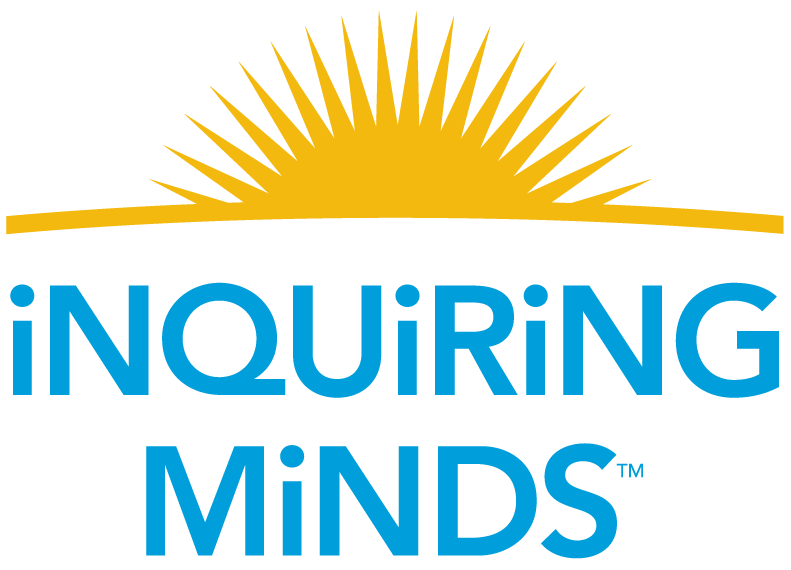Lizzy, at 7, was one of the most important members of our team in developing this tool. We listened to her and learned.
Building a democratic classroom - a protocol for morning meeting
Goal: Using tools that are very familiar to teachers, this interactive tool will help improve the classroom culture to be more civic-minded and cooperative. It will help build community and support creating a democratic classroom
Main benefit: “Relationship building is key in school: This tool will help kids be motivated in school.” Dr. Jacqueline Simmons.
Other benefits: This practice will give students some autonomy. It can lead to better peer-to-peer and teacher/student relationships (scroll way down for ‘standards met’)
Support: Drs. Patricia Crain de Galarce (Lesley University) and Jacqueline Simmons (Teachers College) Gail Sider (4th grade teacher, Hutchinson Elementary School, Pelham, NY) were our key adult consultants on this project. The tool was developed by the Inquiring Minds Student Think Tank (ages 7-18) from all over New York City public schools facilitated by DK Holland.
Time: Allot 15 minutes per day
Supplies:
Post-it notes and pencils for students
Large surface (for example: a large flip chart paper) to affix all completed post-its onto
Room arrangement:
students should sit in a way that allows the teacher and all students to see and hear each other and also close enough to a surface where they can add their own post-its.
The ‘Suggestion’ Protocol
The Inquiring Minds student team of interns and advisors suggests that time is dedicated during morning meetings or homeroom for K-6 students to practice leadership, foster agency, and develop civic mindedness. This protocol gives all students ‘voice and choice’ and builds community.
The protocol can be adjusted to the developmental level of the students and has the potential to be used K-12, but our focus is on upper elementary grades. It assumes the class is large - roughly 30 students.
Monday: teacher poses the first question to all students:
Teacher inquiry:
“What would help you learn better in class?”
Note: Students write or draw on Post-its. It's important to put the focus on the student-to-student interaction, NOT the teacher/student interaction.
Follow up question:
“What helps you learn now in class?”
Students individually write or draw their ideas: each suggestion on separate Post-it notes.
One by one, each student places their note(s) on a large flip chart paper (or tri-fold board) placed on the floor in the middle of the circle.
One student is chosen by the class to be the leader for the day.
That student leads a discussion about putting the suggestions in logical groups
Students share about groups they see - all students should be heard
Once all Post-it notes are placed and grouped, students are asked what they notice about the suggestions.
Students volunteer to share observations.
The conversation continues until students finish their noticings and wonderings.
The student leader asks the class if there is one group that is the most urgent to work (sometimes it is good to start with an easy-to-accomplish suggestion so students feel the win).
Ask for a quick show of hands to see if the class majority agrees.
The leader asks students and teachers to spend today thinking about how they might improve the group they chose to work on.
Tuesday (or day 2): students vote on what suggestion to tackle first to improve the classroom and start to prioritize others
The student author of the suggestion then leads the discussion with a brief explanation of why it felt important to them.
The student leader facilitates and manages so that all students have an equal chance to voice their ideas and add on.
At the close of the meeting, the student leader summarizes the discussion and the next steps. If no resolution is found, the same student might lead the following day.
If there is a resolution, the leader puts the post-it notes on an ‘accomplished’ flip chart or other surface.
Wednesday: On the following days, students vote on which suggestion to tackle – either to continue with the day before or give it a break and choose a different suggestion. The process from the previous day is followed.
The author of the suggestion then leads the discussion with a brief explanation of why it felt important.
The student leader facilitates and manages so that all students have an equal chance to voice their ideas.
At the close of the meeting, the student leader summarizes the discussion and next steps. If no resolution is found, the same student might lead the following day.
If there is a resolution, the post-it note will be placed on an accomplished flip chart.
Thursday: continues like above
Friday: Questions posed: What did we accomplish as a class this week in making change? What is working better now, and what should we re-think?
Students talk round-robin or with a talking stick around the circle to share their thoughts.
A dialogue continues
A summary of the discussion closes the week’s reflection
Celebrate if the class generally feels their learning is improving.
Following weeks: The process can continue until all suggestions have a resolution and all students have had a chance to lead.
The next round starts with a new prompt – Here are some suggestions:
How can we work together better as a learning community?
How can we get to know each other better?
How can we share what is important to us outside of school?
How can we support all classmates to be heard?
How can we make our community stronger?
Option: When completed, the student leaders could organize a short presentation for the school leadership team, town hall, or the principal.
If they decide to do this, how would they communicate the findings?
How can they make sure the improvements happen?
Please give us feedback!
Email dk@InquiringMindsInstitute.org
Standards Met: College, career, and civic life (c3) framework for social studies state standards
Dimension 1: Developing Questions and Planning Inquiries
Dimension 1 features the development of questions and the planning of inquiries. With the entire scope of human experience as its backdrop, the content of social studies consists of a rich array of facts, concepts, and generalizations. The way to tie all of this content together is through the use of compelling and supporting questions. Questioning is key to student learning. The C3 Framework encourages the use of compelling and supporting questions, both teacher- and student-generated, as a central element of the teaching and learning process.
Common core college and career readiness anchor standards for speaking and listening comprehension and collaboration:
CCSS.ELA-LITERACY.CCRA.SL.1 Prepare for and participate effectively in a range of conversations and collaborations with diverse partners, building on others’ ideas and expressing their own clearly and persuasively.
CCSS.ELA-LITERACY.CCRA.SL.2 Integrate and evaluate information presented in diverse media and formats, including visually, quantitatively, and orally.
CCSS.ELA-LITERACY.CCRA.SL.3 Evaluate a speaker’s point of view, reasoning, and use of evidence and rhetoric.
Presentation of Knowledge and Ideas:
CCSS.ELA-LITERACY.CCRA.SL.4 Present information, findings, and supporting evidence such that listeners can follow the line of reasoning and the organization, development, and style are appropriate to task, purpose, and audience.
Collaborative for academic, social, and emotional learning competencies:
Self-Awareness: The ability to understand one’s emotions, thoughts, and values and how they influence behavior across contexts. This includes capacities to recognize one’s strengths and limitations with a well-grounded sense of confidence and purpose.
Social awareness: The ability to understand the perspectives of and empathize with others, including those from diverse backgrounds, cultures, and contexts. This includes the capacities to feel compassion for others, understand broader historical and social norms for behavior in different settings, and recognize family, school, and community resources and supports.
Relationship skills: The ability to establish and maintain healthy and supportive relationships and to effectively navigate settings with diverse individuals and groups. This includes the capacities to communicate clearly, listen actively, cooperate, work collaboratively to problem solve and negotiate conflict constructively, navigate settings with differing social and cultural demands and opportunities, provide leadership, and seek or offer help when needed.
Listen to the Teacher…
“What a simple way to empower your entire class, while at the same time addressing important classroom issues! I've used this protocol twice now in my fourth grade class, at the end of the year and at the beginning, and have been wowed both times with the impact it has had on our community. The significance of having STUDENTS lead these discussions cannot be overstated: the leaders often have to reach out of their comfort zone, the rest of the students are wonderfully engaged, and the teacher is reminded of the need to be, as much as possible, the "guide on the side and not the sage on the stage". AND I see results regarding the particular behavior addressed almost immediately. Thank you for sharing this strategy with us!”
Gail Sider, 4th Grade Teacher
Hutchinson Elementary School
Pelham, NY


